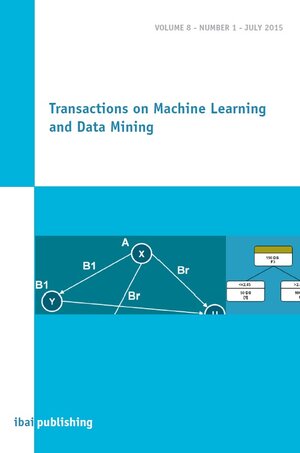
×
![Buchcover ISBN 9783942952330]()
Wissenschaftler/Fachpublikum
Transaktions on Machine Learning and Data Mining
VOLUME 8 - NUMBER 1 - JULY 2015
herausgegeben von Petra PernerThere is a tremendous interest in the applications of intelligent techniques in virtually
every field including science, arts, defence and security [1-4], engineering and information technology [5-6], healthcare [7-9], aviation, manufacturing [10], and so on.
This is due to fact that intelligent techniques offer many advantages such as learning,
adaptation, self-organisation, fault tolerance, etc.
This volume includes two papers, one on machine learning in security applications
and the second on transductional holonic formalism for control systems applications.
The first paper [11] on machine learning in security applications by Ariu, Corona,
Tronci and Giacinto presents techniques for devising machine learning applications in
security applications. The author describe the applications of machine learning algorithms in biometrics and a number of computer security related applications. Performance measure is very important to know how the system performs and it also permits to compare various systems. This research describes the performance in various security related applications. It is demonstrated that the fusion of multiple classifiers offers better accuracy and robustness. The performance is validated using experimental results.
The second paper [12] is on transductional holonic formalisms for control systems
applications, authored by Ciufudean, Filote and Vlad. This research reports a new architecture for the diagnosis and performance evaluation of holonic distributed systems using Petri nets. The optimum behaviour of the Petri net model of a holonic cyclic manufacturing system is formulated. An algorithm is presented for throughput of scheduling production lines. A new framework of transductional holonic is presented using illustrative scenario and validated using transductional models. The technique is applicable for the modelling and analysis of manufacturing systems, supply chains and so on.
every field including science, arts, defence and security [1-4], engineering and information technology [5-6], healthcare [7-9], aviation, manufacturing [10], and so on.
This is due to fact that intelligent techniques offer many advantages such as learning,
adaptation, self-organisation, fault tolerance, etc.
This volume includes two papers, one on machine learning in security applications
and the second on transductional holonic formalism for control systems applications.
The first paper [11] on machine learning in security applications by Ariu, Corona,
Tronci and Giacinto presents techniques for devising machine learning applications in
security applications. The author describe the applications of machine learning algorithms in biometrics and a number of computer security related applications. Performance measure is very important to know how the system performs and it also permits to compare various systems. This research describes the performance in various security related applications. It is demonstrated that the fusion of multiple classifiers offers better accuracy and robustness. The performance is validated using experimental results.
The second paper [12] is on transductional holonic formalisms for control systems
applications, authored by Ciufudean, Filote and Vlad. This research reports a new architecture for the diagnosis and performance evaluation of holonic distributed systems using Petri nets. The optimum behaviour of the Petri net model of a holonic cyclic manufacturing system is formulated. An algorithm is presented for throughput of scheduling production lines. A new framework of transductional holonic is presented using illustrative scenario and validated using transductional models. The technique is applicable for the modelling and analysis of manufacturing systems, supply chains and so on.


